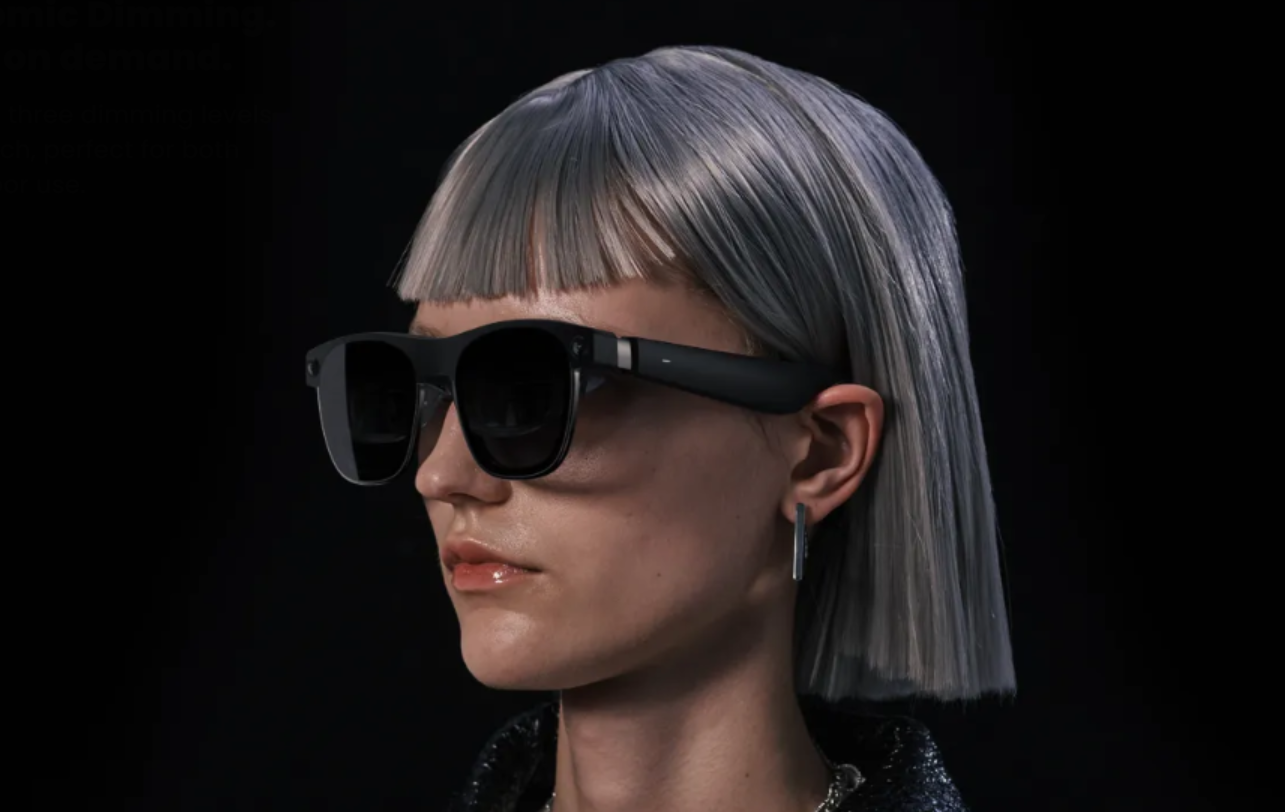 EMERGING TECH
EMERGING TECH
 EMERGING TECH
EMERGING TECH
 EMERGING TECH
EMERGING TECH
Xreal Inc., formerly Nreal, announced the launch of the Xreal Air 2 Ultra augmented reality glasses ahead of CES 2024 on Sunday, featuring new 3D sensors and computer vision capabilities for mapping virtual objects onto surroundings.
The new wearable AR glasses feature a sleek titanium ring frame with a “wayfarer-esque design” that weighs about 80 grams. They’re a bit more bulky than normal glasses but capable of providing augmented reality content, which blends holographic digital content with what the wearer can see through the glasses by overlaying it onto their vision.
The AR glasses are available for pre-order now for $699 and are expected to ship in March 2024.
“With Xreal Air 2 Ultra we’re empowering developers around the world by providing an affordable and lightweight solution that allows them to jump into the exciting world of spatial computing and create the next generation of mixed reality experiences,” said Chi Xu, founder and chief executive of Xreal.
The device features a 52-degree field of view horizontally with a display capable of 90Hz in 3D and 120Hz in 2D (for reproducing screens) with a resolution of 1080p high-definition for each eye. When viewing content this should be perceptively about the same as providing the ability to view content, such as games and movies, like looking at a 154-inch screen at a distance of 13 feet away.
The glasses have added a pair of new cameras into the frame that allows for real-time tracking of the environment and the user’s head position and hands. The company says that this will mean that the glasses will be capable of richer AR content interspersed with the environment such as rotatable 3D objects that can sit on physical objects, such as a dining room table, or float in the air around the user.
As part of the announcement, Xu took a jab at mixed reality headsets, such as Apple Inc.’s upcoming $3,500 Vision Pro and Meta Platform Inc.’s $499 Meta Quest 3. “Unlike competing brands in this emerging space, we believe in making advanced wearable six-degrees-of-freedom glasses something you can wear all day long and that is accessible to all players in the [extended reality] development ecosystem,” Xu said.
Mixed reality is a type of technology that uses fully enclosed goggles and cameras to pass-through a view of what the user can see to blend digital content with the physical world in contrast to augmented reality. As a result, mixed reality headsets are much bulkier and heavier than augmented reality glasses, which use clear lenses with screens inside to “augment” the vision of the user, which can make them more comfortable to wear long term.
Audio technology built into the device allows for better dispersion of sound for cinematic audio delivered to the user and better privacy with lower sound leakage, the company said. This also leads to a more private experience for users as nearby people won’t hear what the user is listening to while they’re playing movies or video games on the device.
The Xreal Air 2 Ultra needs to be tethered to another device to work such as a laptop or a phone, but it has a broad compatibility. It can be connected to many devices such as Mac and Windows laptops, Samsung Android phones and the iPhone 15.
Support our mission to keep content open and free by engaging with theCUBE community. Join theCUBE’s Alumni Trust Network, where technology leaders connect, share intelligence and create opportunities.
Founded by tech visionaries John Furrier and Dave Vellante, SiliconANGLE Media has built a dynamic ecosystem of industry-leading digital media brands that reach 15+ million elite tech professionals. Our new proprietary theCUBE AI Video Cloud is breaking ground in audience interaction, leveraging theCUBEai.com neural network to help technology companies make data-driven decisions and stay at the forefront of industry conversations.